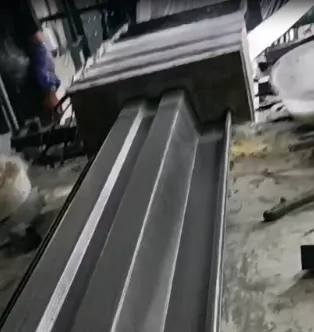loading...
- No. 9, Xingyuan South Street, Dongwaihuan Road, Zaoqiang County, Hengshui, Hebei, China
- admin@zjcomposites.com
- +86 15097380338
- Welcome to visit our website!
well water pressure tank
Understanding Well Water Pressure Tanks Functionality and Importance
When it comes to providing a consistent supply of water from a well system, a well water pressure tank is an essential component. These tanks serve to store water and maintain adequate pressure in the plumbing system, ensuring that users have access to a reliable water supply, whether for household use, irrigation, or livestock. In this article, we will dive deeper into the functions, types, and importance of well water pressure tanks, as well as some maintenance tips to ensure longevity and efficiency.
What is a Well Water Pressure Tank?
A well water pressure tank is a vessel used in a water well system that helps to manage water pressure and store water. When water is drawn from the well into the pressure tank, it creates an air pocket above the water that compresses as the water fills the tank. As water is used, the pressure in the tank decreases, triggering the well pump to replenish the water supply. This mechanism allows for a steady supply of water without frequent cycling of the pump, which could lead to premature wear and tear.
Types of Well Water Pressure Tanks
There are primarily two types of well water pressure tanks bladder tanks and diaphragm tanks.
1. Bladder Tanks These tanks feature a rubber bladder that separates the water from the air. As water fills the tank, the bladder expands, compressing the air above it. This design allows for better pressure maintenance and reduces the number of pump cycles, leading to energy efficiency and longer pump life.
2. Diaphragm Tanks Similar to bladder tanks, diaphragm tanks have a flexible diaphragm separating the air and water. However, the diaphragm is fixed to the tank's interior, which allows for greater stability under varying pressure levels. Both types of tanks effectively maintain water pressure and enhance system performance.
Importance of Well Water Pressure Tanks
The significance of well water pressure tanks cannot be overstated for several reasons
- Stable Water Supply A pressure tank ensures that users receive a consistent water supply at a manageable pressure. This is particularly vital for households that require adequate water flow for daily activities such as cooking, bathing, and laundry.
well water pressure tank

- Energy Efficiency By reducing the frequency of pump cycles, pressure tanks help save energy. Frequent cycling can not only increase energy bills but also contribute to greater wear and tear on the well pump, leading to costly repairs.
- System Longevity Maintaining balanced pressure levels through consistent water supply reduces strain on the pump system. This prolongs the life of both the pump and the plumbing infrastructure, ultimately saving money on maintenance and replacement costs.
Maintenance Tips for Well Water Pressure Tanks
To ensure that your well water pressure tank functions optimally, periodic maintenance is essential
1. Check the Pressure Monitor the air pressure in the tank using a pressure gauge. The typical range for well tanks is between 40 to 60 psi. If the pressure is below this range, it may be necessary to adjust it using a standard air compressor.
2. Inspect for Leaks Regularly check the tank and connections for any signs of leakage. Puddles around the base of the tank or dampness on the wall may indicate a leak that needs immediate attention.
3. Evaluate the Pump Keep an eye on the performance of the pump. If the pump cycles frequently or runs continuously without maintaining pressure, it may signal an issue with the tank or the overall well system.
4. Professional Service Consider having a professional technician inspect the system at least annually. They can provide a thorough assessment, ensuring that the pressure tank and associated equipment are functioning correctly.
Conclusion
Well water pressure tanks play a crucial role in maintaining water supply and pressure, making them indispensable for households relying on well water systems. Understanding their function, types, and maintenance can help homeowners optimize their water systems, ensuring reliability and efficiency. Regular monitoring and care will prolong the life of both the pressure tank and the entire well system, ultimately contributing to a sustainable water supply. Whether for personal use or larger agricultural needs, taking care of your well water pressure tank is an investment in convenience and resource management.
-
The Rise of FRP Profiles: Strong, Lightweight, and Built to LastNewsJul.14,2025
-
SMC Panel Tanks: A Modern Water Storage Solution for All EnvironmentsNewsJul.14,2025
-
GRP Grating: A Modern Solution for Safe and Durable Access SystemsNewsJul.14,2025
-
Galvanized Steel Water Tanks: Durable, Reliable, and Ready for UseNewsJul.14,2025
-
FRP Mini Mesh Grating: The Safer, Smarter Flooring SolutionNewsJul.14,2025
-
Exploring FRP Vessels: Durable Solutions for Modern Fluid HandlingNewsJul.14,2025
-
GRP Structures: The Future of Lightweight, High-Performance EngineeringNewsJun.20,2025
